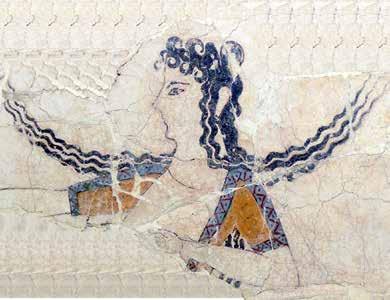
2 minute read
Is tissue engineering
Bioengineered corneal stroma
Is tissue engineering the answer to donor shortages? Dermot McGrath reports
With a worldwide shortage of donor corneas, one of the best hopes for a viable and sustainable solution to the problem may well lie in tissue engineering, specifically the development of a bioengineered corneal stroma, according to Neil Lagali PhD.
Speaking at the 11th EuCornea Congress, Prof Lagali, Linköping University, Sweden, said that there is a strong rationale for replacing corneal stroma alone in cases that normally require transplantation.
“Stromal keratoplasty has emerged in recent years as a new additive or replacement therapy for the cornea. There are cases where the endothelium is still healthy and we can avoid the use of techniques that harm the endothelium or the epithelium and its cells and underlying nerves, so we can preserve both layers. This could be used for example in advanced keratoconus or in cases of stromal scarring or for stromal dystrophies,” he said.
The advantages of using a bioengineered stroma in such circumstances are multiple, said Prof Lagali.
“A bioengineered stroma could be made cell-free or could incorporate stem cells. This would make it immune tolerant and avoid issues of rejection. Furthermore, there would theoretically be a limitless supply of stroma, so there would be no need for donation, eye banking or preservation. We could also provide a customised size, thickness and shape of the implant and perhaps even provide additional functions such as sustained drug release beyond what human tissue can offer,” he said.
Promising results have been achieved by Jorge Alió’s group in Alicante using corneal stromal enhancement based on stem cell therapy in advanced keratoconus patients, while Zheng et al. in China have reported success using acellular porcine corneal stroma in herpes simplex keratitis patients.
While these results have been encouraging, the decellularisation process involved still requires corneal donor tissue, noted Prof Lagali.
A fully tissue-engineered anterior human cornea to treat severe corneal trophic ulcers currently being tested in a phase I/II clinical trial in Andalusia, Spain, has shown good early feasibility and safety results.
Prof Lagali’s own group has been involved in the development of a collagen-based bioengineered stroma.
“It is cell free and made from medical grade porcine collagen that is cross-linked to make it mechanically strong. It is transparent and we can customise the size, thickness, shape and swelling characteristics of the stroma,” he said.
After successful animal feasibility studies, the bioengineered stroma, manufactured by the Swedish company LinkoCare Life Sciences, is currently undergoing trials in patients with advanced keratoconus.
“Initial results are very good with improved curvature of the anterior and posterior surfaces, improved uncorrected visual acuity and no reports of scarring or rejection,” he concluded.
The work described by Prof Lagali has been supported by a grant from the EU Horizon2020 Programme, ARREST BLINDNESS, Grant No. 667400 (www.arrestblindness.eu).








